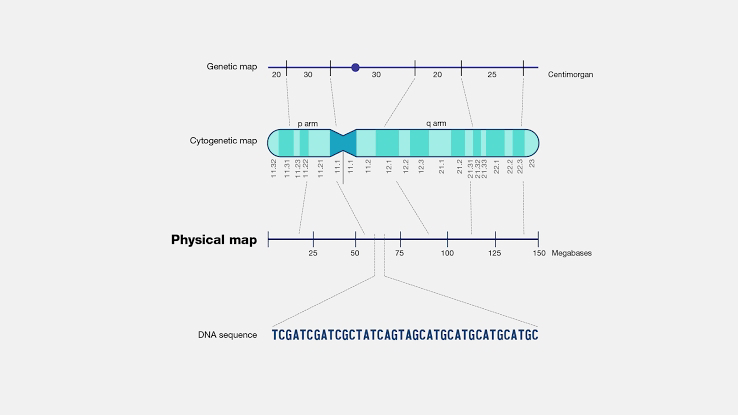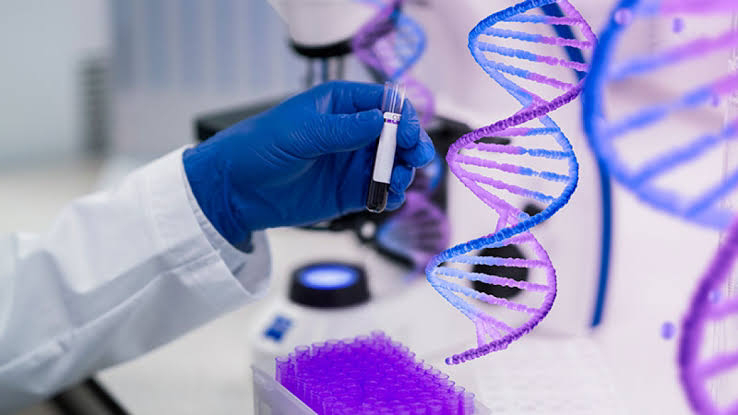The Human Genome Project is a major research initiative focused on understanding the complete set of human genes, known as the genome. The main goal is to create tools that help scientists find genes linked to both rare and common diseases. The project has already made discoveries that are influencing basic biological research and improving clinical medicine. This project aims to explore how isolating and studying DNA can give scientists new ways to understand and tackle diseases. Since most health conditions, apart from physical injuries, are linked to changes in DNA, analyzing this genetic material could lead to better strategies for preventing and treating various illnesses.
Aim of the Human Genome Project
The Human Genome Project focuses on creating three main research tools that help scientists find genes linked to normal biological processes and various diseases, including both rare and common ones. These tools, known as positional cloning techniques, allow researchers to search for disease-related genes directly in the DNA without needing to know the gene's protein product or function first.
A key goal of the project is to develop methods that let scientists analyze large amounts of genetic material quickly and accurately. The success of the project depends on mapping each chromosome precisely. To achieve this, the Human Genome Project uses three different types of maps, which help scientists better understand how individual genes are structured, how they relate to each other, and how they fit into the overall chromosomal structure.
Genetic Mapping
Genetic mapping, also known as linkage mapping, is a way for scientists to find out if a disease or trait is connected to certain genes that we inherit from our parents. By using genetic mapping, researchers can estimate where a specific gene is located on a chromosome. The process starts with collecting blood or tissue samples from families where a particular disease or trait is common. Scientists then extract DNA from these samples and look for a specific sequence of DNA (like "CACACA") that appears repeatedly in the chromosomes. If this sequence is found in family members who have the disease, it could be a clue that the gene linked to the disease is nearby. By analyzing more DNA samples from other people with and without the disease, researchers can calculate how likely it is that this DNA sequence is linked to the disease.
Physical Mapping
Physical mapping involves creating a collection of overlapping DNA fragments that cover specific regions or even entire chromosomes. These fragments can be saved and used later by researchers who want to find a specific gene located in a particular chromosome area. The physical map helps scientists focus their search on a smaller part of the chromosome, making it easier to find the gene they are looking for. Additionally, researchers are working on using fragments of expressed genes, called expressed sequence tags (ESTs), as markers on the physical genome map. These ESTs, which are made from complementary DNA, could make the maps more powerful and useful for identifying specific genes.
The DNA Sequence Map
The Human Genome Project's toughest task is to figure out the exact order of all 3 billion nucleotides (the building blocks of DNA) in the human genome. After creating detailed genetic and physical maps of the genome, scientists can develop a sequence map. This map will help them find genes, understand how certain DNA regions control gene activity, and connect the structure of DNA to its function in the body.
Technological Advances in Genomic Research
The demand for large-scale DNA sequencing has driven advancements in technology, focusing on increasing efficiency and reducing the size of equipment. This has led to the creation of automated machines that speed up and cut the cost of the biochemical steps in sequencing, making it easier to analyze results and store data in databases. Robotic instruments have also been developed to handle repetitive tasks, which not only speeds up the process but also minimizes errors during sequencing and mapping. Additionally, miniaturization technology allows for sequencing more and longer DNA fragments in less time and makes the equipment more portable, which is especially useful in clinical or field work. Efforts are also being made to lower the overall costs of DNA sequencing.
Applications of the Human Genome Project
The detailed genetic, physical, and sequence maps created by the Human Genome Project are essential for understanding complex diseases that result from a mix of genetic and environmental factors, like diabetes, heart disease, cancer, and mental health conditions, including alcoholism. For instance, in 1994, researchers used genetic maps to identify at least five different chromosome regions linked to type 1 diabetes. Now, with automated microsatellite marker technology, scientists can quickly and accurately identify the genetic makeup (genotype) of many individuals. This allows them to reliably map the genes associated with common diseases in a shorter time.
Efforts to understand and treat diseases at the DNA level are forming the foundation of a new field called molecular medicine. Scientists are discovering genes linked to diseases, which helps them understand how diseases progress, create treatments using synthetic DNA or related products, and assess a person’s risk of developing diseases in the future. By targeting the genetic causes of illnesses, molecular medicine aims to provide personalized health care based on each person’s unique genetic makeup. One of the most immediate practical uses of gene discovery is clinical tests that detect mutations in DNA that cause diseases. These tests can confirm the genetic cause of an existing disease, predict the likelihood of developing a disease later in life, or identify individuals who carry genes for recessive diseases like cystic fibrosis, even if they don't show symptoms.
Gene discovery helps us create new treatments for both inherited and acquired diseases. This includes producing natural substances like blood-clotting factors, growth hormones, and other proteins that can treat certain conditions. Another approach is gene therapy, which involves introducing a healthy gene into a patient's cells to fix a genetic problem.
Link to the Research Paper











Comments
Post a Comment